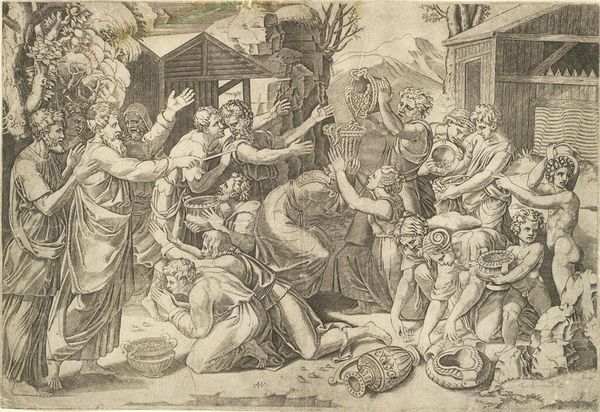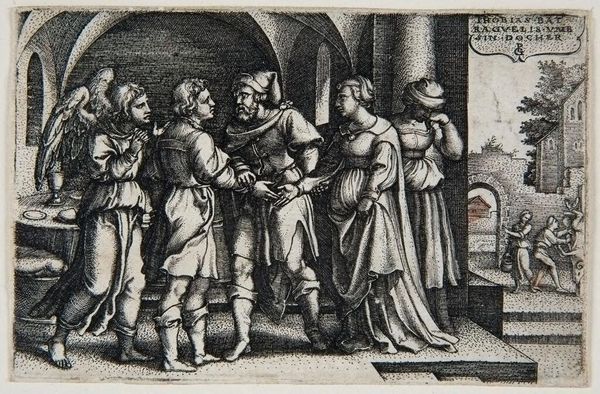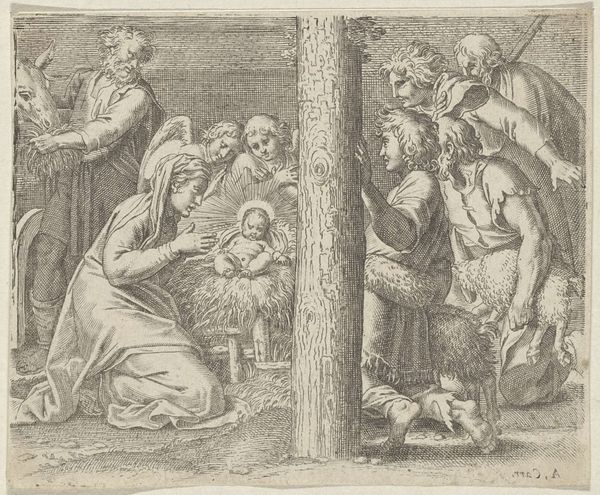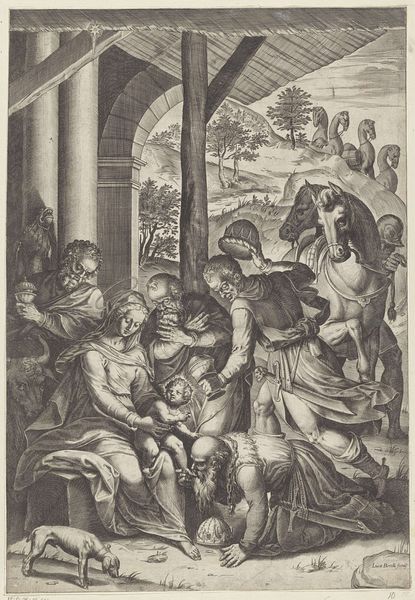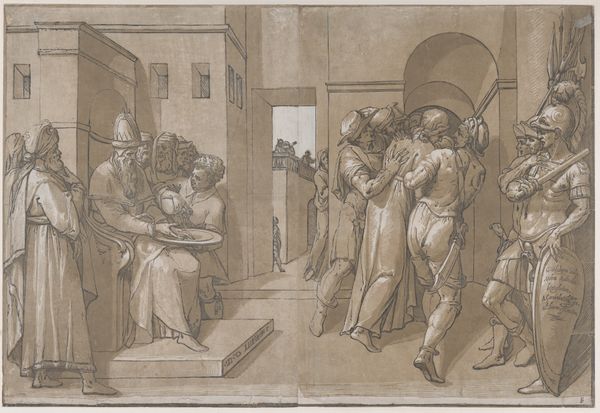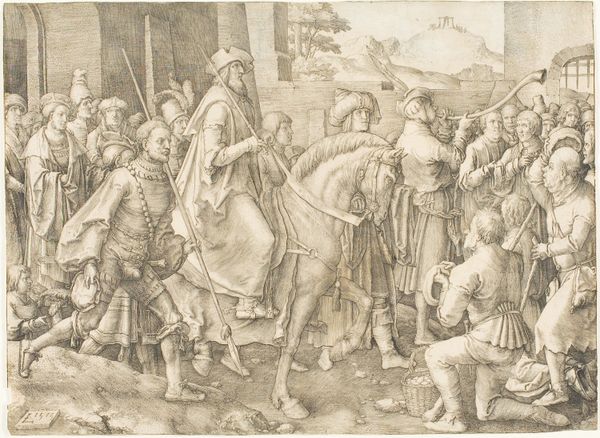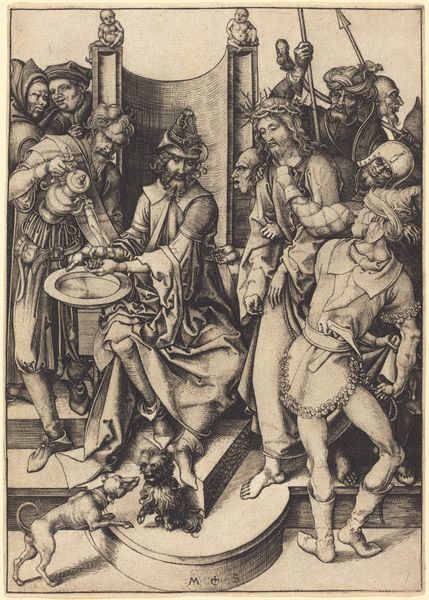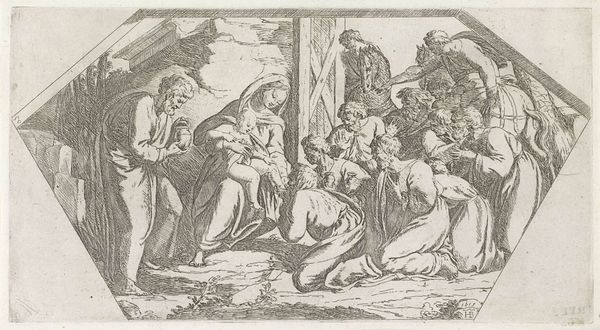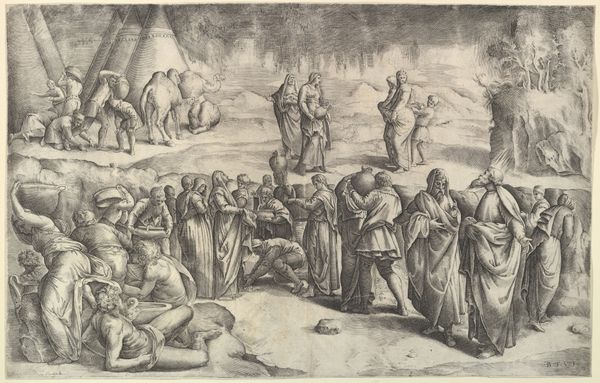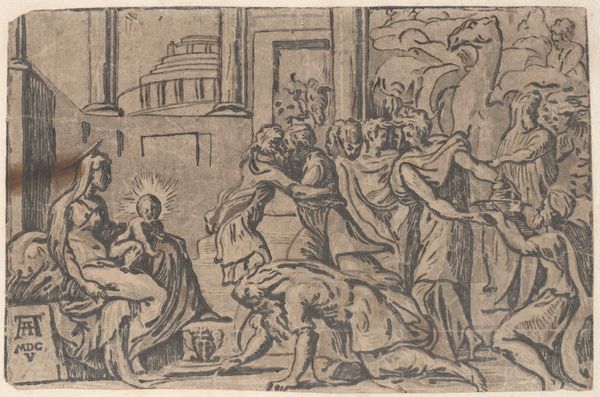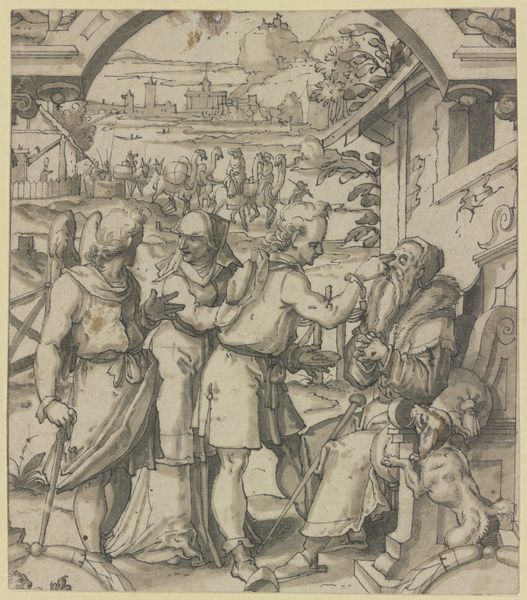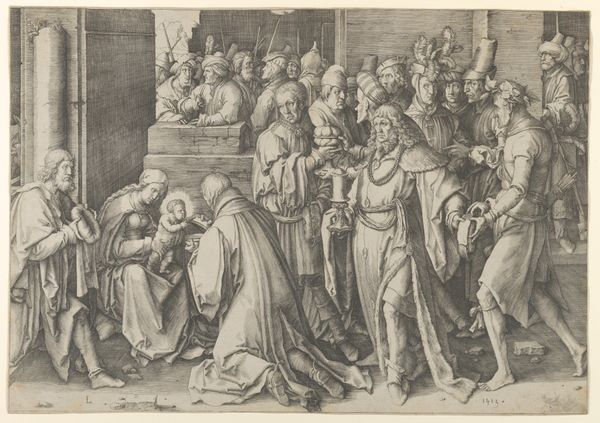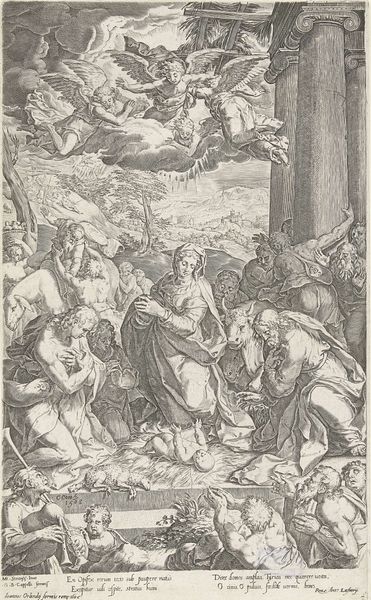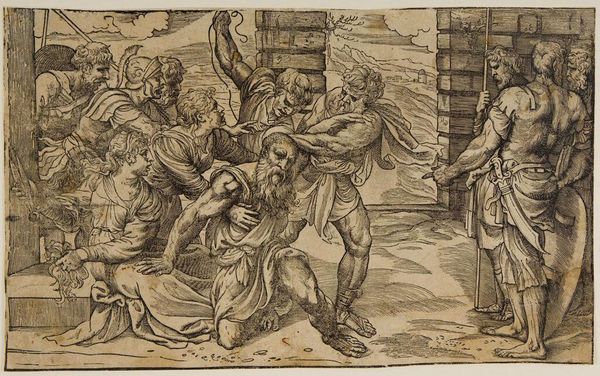
oil-paint
#
narrative-art
#
oil-paint
#
figuration
#
oil painting
#
underpainting
#
painting painterly
#
history-painting
#
italian-renaissance
Copyright: Public Domain: Artvee
Raphael painted 'The Adoration of the Kings' in the early 16th century, likely using oil paints on a prepared wood panel or canvas. Think about the traditional art materials of the time: pigments painstakingly ground from minerals and plants, and the skilled labor required to prepare the painting surface and apply the paint in delicate layers. Raphael's technique imbues the scene with a sense of serenity and grace, a visual expression of the religious narrative. The creation of such a painting involved not only Raphael's artistic genius, but also the labor of his workshop assistants who would have prepared materials and executed parts of the composition. Consider the social context: Raphael's art was commissioned by wealthy patrons, reflecting the economic power structures of Renaissance society. The precious materials and time-consuming processes involved in creating paintings like this elevated them to objects of status and veneration. By recognizing the materiality and making of this painting, we gain a richer understanding of its cultural significance, acknowledging the value of both artistic skill and the labor that went into its creation.
Comments
No comments
Be the first to comment and join the conversation on the ultimate creative platform.
